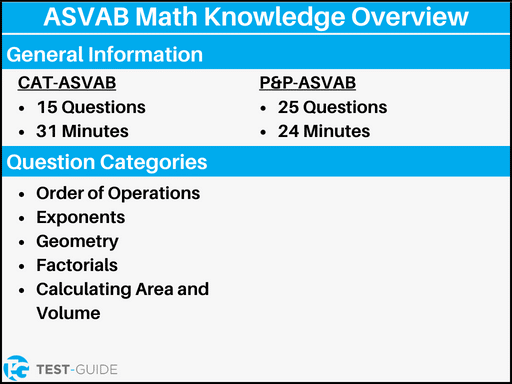Math stresses a lot of students out. Prepare for the math section of the exam with our ASVAB math practice test.
Use our practice questions and answer explanations to familiarize yourself with this section of the exam.
Start Your Practice
Do you feel comfortable with the math section of the ASVAB? Prepare for other sections by visiting our ASVAB practice tests home.
ASVAB Math Overview
Each section of the exam serves an important purpose. ASVAB math is no exception. You will need to figure out if you are taking the computer version or the paper and pencil version of the exam.
If you are taking the computer version of the exam, you can expect the following:
- 15 questions
- 31-minute time limit
If you are taking the paper and pencil version of the exam, you can expect the following:
- 25 questions
- 24-minute time limit
While the math section of the ASVAB may sound similar to the arithmetic reasoning section, the math questions are more algebra-focused, while the arithmetic questions focus more on simple calculations and numbers.
Some topics you can expect to find on this section include:
- Order of operations (PEMDAS)
- Exponents
- Geometry
- Factorials
- Calculating area and volume
Want to focus on another section? Visit our free ASVAB practice home.
Frequently Asked Questions
How many questions are on ASVAB math knowledge?
There are 15 questions on the computer-adaptive version and 25 questions on the pencil-and-paper version.
What is the time limit on the math knowledge section?
You will have 31 minutes to complete the computer-adaptive version, while the pencil-and-paper version is given 24 minutes.
What topics are tested on the ASVAB math section?
The main ASVAB math questions you’ll be tested on are geometry, order of operations, volume and area calculations, factorials, and exponents.


